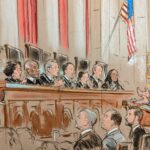“The courts have defined what willful is – they did something the law said they can’t do. Whether it was intentional, or they transposed some numbers, it’s still willful.”
Much of the coverage of the U.S. Supreme Court’s recent decision to overturn the Chevron Deference doctrine suffers from one of two problems: Either it’s written by lawyers for lawyers and is therefore unintelligible for anyone without a juris doctor, or it’s written by the corporate media and is chock-full of errors, omissions, and untruths.
Bill Sack, director of legal operations for the Second Amendment Foundation, agreed to help clarify this landmark Supreme Court decision, which it turns out is good for gun owners and bad for the ATF.
Q: What is the Chevron Deference doctrine?
A: “By a vote of 6-3, the justices overruled their landmark 1984 decision in Chevron U.S.A., Inc. v. Natural Resources Defense Council, Inc., which gave rise to the doctrine known as Chevron Deference. Under that doctrine, if Congress has not directly addressed the question at the center of a dispute, a court was required to uphold the agency’s interpretation of the statute as long as it was reasonable.
By Lee Williams



